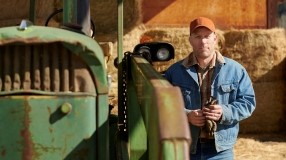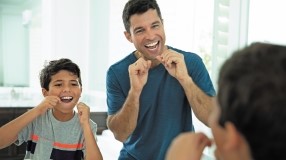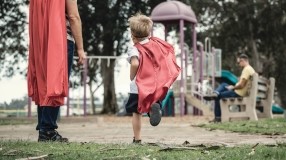Keep Your Smile Safe
Smile safety is not just about preventing sports injuries.

Have Fun and Stay Safe
Whether it's soccer or horseback riding, family vacation or participating in activities in your neighborhood, your teeth may be at risk of injury. Smile safety is not just about preventing sports injuries. Injuries to your mouth, teeth and oral facial features can occur during many types of daily activities. These injuries can range from a broken jow or facial bones, minor chipped or cracked teeth to knocked out of the socket. By taking a few precautions and establishing good safety habits, you can help protect your face and mouth from harm.
Mouthguards
Mouthguards are an easy way to protect your smile from serious injury. A mouthguard is made from flexible plastic that can be worn during contact and non-contact sports to protect your teeth and the soft tissues of your mouth from trauma.
- Get your children used to wearing mouthguards at a young age so they can get in the habit of protecting their teeth for a lifetime.
- Mouthguards are effective in preventing cuts and bruises to the soft tissues of your mouth. They keep the lips and cheeks away from the teeth. If you have braces, this can be particularly important.
- Mouthguards should be worn while participating in any non-contact sport that may place your teeth at risk of injury. The best safety habits include wearing a mouthguard even during practice and warm-ups.
Helmets
Many activities involve equipment with wheels such as bikes, skateboards and rollerblades. Helmet use has been found to reduce the number and severity of oral facial injuries. Check the list below for a few precautions before setting out on wheels or engaging in other activities that places you at risk.
- Be sure you wear an appropriate helmet for the activity in which you are participating. For sports such as football, baseball and ice hocky a helmet with an attached face guard may be warranted.
- Teach children from an early age that helmets are a required piece of protective equipment.
- Helmets should fit snugly and safety straps should always be fastened.
Car Seats and Seat Belts
You can prevent dental injuries when traveling in a car by taking a few precautions.
- Protect yourself by always wearing a seatbelt. Set a good example for your children and insist that they buckle up too.
- Make sure that your seat belts and car seats are in proper working condition and properly installed.
- Infants and toddlers should remain in a rear-facing car seat until age 2 or until they reach the highest weight and height allowed by the car seat's manufacturer.
- Any child 2 years of age or older who has outgrown their car seat, should use a forward-facing car seat with a harness for as long as possible, up to the highest weight and height allowed by the car seat's manufacturer
- School-aged children should use a belt-positioning booster seat until the vehicle seat belt fits properly, typically when they reach 4 feet 9 inches in height and are between 8 to 12 years of age.
- Do not let your child get out of his or her seat while the car is moving.
- Children younger than 13 years of age should ride in the back seat.
Playground and Backyard Safety
Take precautions to prevent injuries when your children are playing on various playground or backyard structures.
- If you need to help your child on to any play equipment, they are not yet ready to play on it.
- Choose playgrounds with surfaces made from wood chips or shredded rubber to reduce the risk of injury.
- Check the equipment for any sharp or protruding objects.
- Encourage the proper use of equipment. Discourage your children from climbing up slides and jumping from swings or the top of slides.
Regardless of the time of year, injuries to the head, neck and mouth are not uncommon. You can be a smile saver and protect yourself and your children from oral facial injuries by providing and using safety equipment like mouthguards and helmets.
The American Dental Association recommends wearing a properly fitted mouthguard for these and other sports:
- Acrobatics
- Basketball
- Bicycling
- Boxing
- Equestrian Events
- Extreme Sports
- Field Events
- Football
- Gymnastics
- Handball
- Ice Hockey
- Inline Skating
- La Crosse
- Martial Arts
- Racquetball
- Rugby
- Shot Putting
- Skateboarding
- Skiing
- Skydiving
- Soccer
- Softball
- Squash
- Surfing
- Volleyball
- Water Polo
- Weightlifting
- Wrestling
Protect yourself.
Protect your children.
Play hard and be safe.
Note: The information in this document is not meant to replace the advice of your dentist or another licensed healthcare professional. Talk to your dentist for any specific dental advice.
Sources: American Dental Association: www.ada.org; American Academy of General Dentistry: www.agd.org; Sports Dentistry: www.sportsdentistry.org; National Safe Kids: www.safekids.org; American Academy of Pediatrics: www.aap.org;






